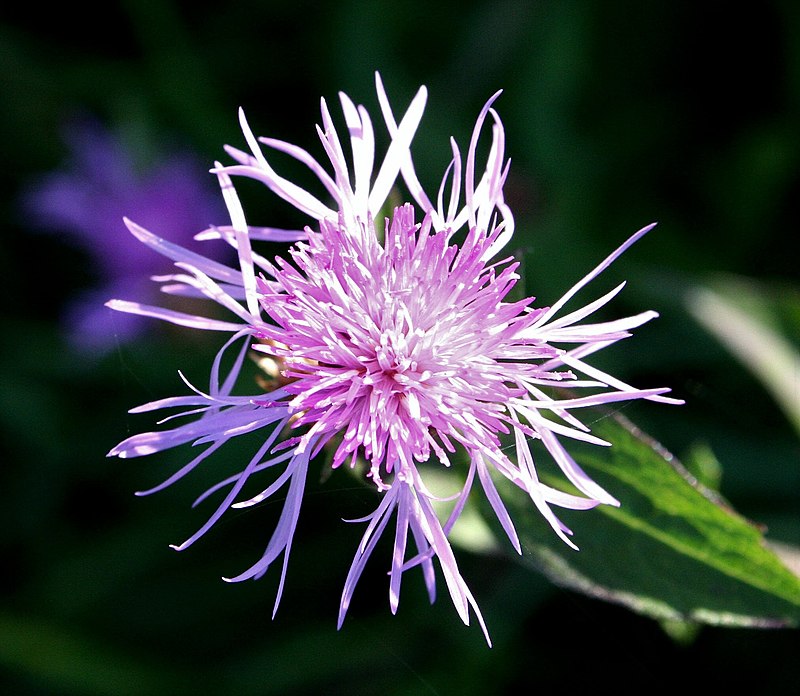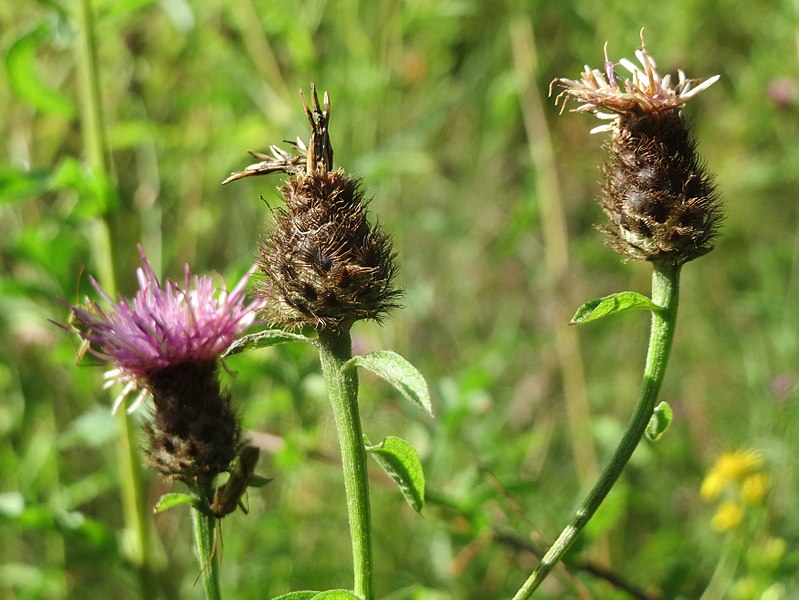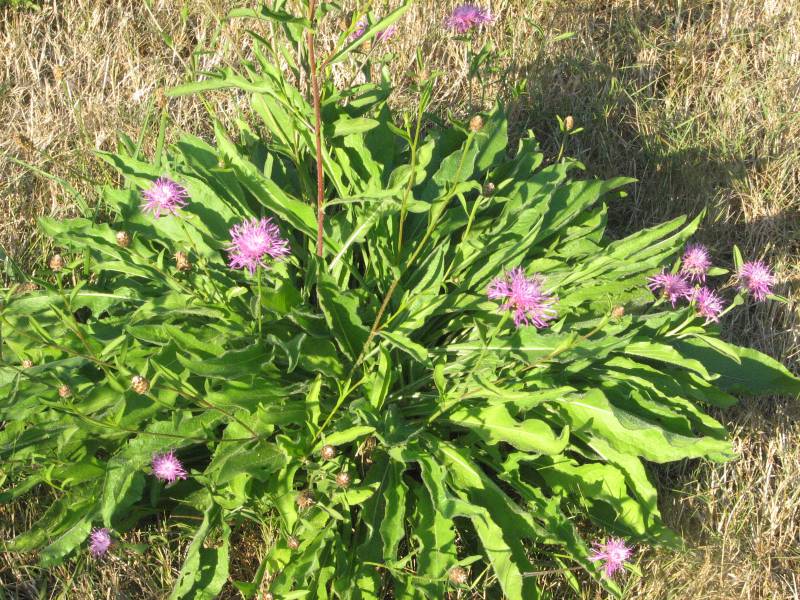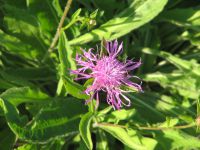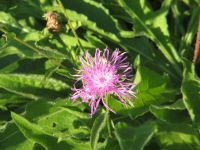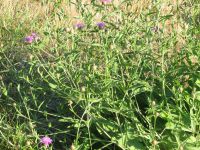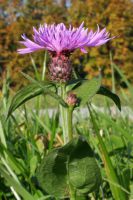Distribution: Occurring in scattered locations on both sides of the Cascades crest in Washington; British Columbia to California, east to Montana and Wyoming, also from Great Lakes region east to northeastern North America.
Habitat: Roadsides, fields, ditches, wastelots, and other disturbed, open areas.
Flowers: July-September
Origin: Introduced from Europe
Growth Duration: Perennial
Conservation Status: Not of concern
Pollination: Bees, flies, beetles, wasps
Perennial, the stem 2-10 dm. tall, the herbage rough-puberulent to sub-glabrous.
Lower leaves oblanceolate, petiolate, often coarsely few-lobed; middle and upper leaves smaller, becoming sessile, mostly toothed to entire.
Heads terminating the numerous branches; involucre 11-18 mm. high, higher than broad; the middle and outer involucre bracts usually with comb-like, blackish appendages 1-3 mm. long; flowers all tubular, the marginal flowers enlarged; pappus none.
Achene.
Publication: Sp. Pl. 3: 2288. 1803. 1803.
Centaurea dubia Suter ssp. nigrescens (Willd.) Hayek
Centaurea dubia Suter ssp. vochinensis (Bernh. ex Rchb.) Hayek
Centaurea jacea L. ssp. nigrescens (Willd.) Celakovsky
Centaurea transalpina Schleich. ex DC.
Centaurea vochinensis Bernh. ex Rchb.
PNW Herbaria: Specimen records of Centaurea nigrescens in the Consortium of Pacific Northwest Herbaria database
WA Flora Checklist: Centaurea nigrescens checklist entry
OregonFlora: Centaurea nigrescens information
E-Flora BC: Centaurea nigrescens atlas page
CalPhotos: Centaurea nigrescens photos

